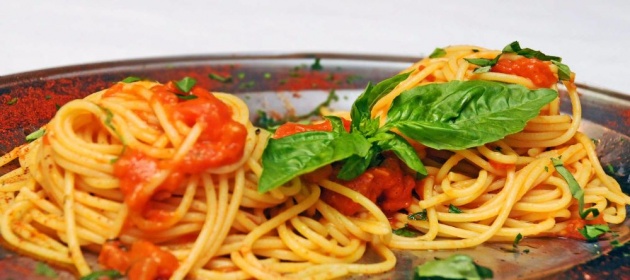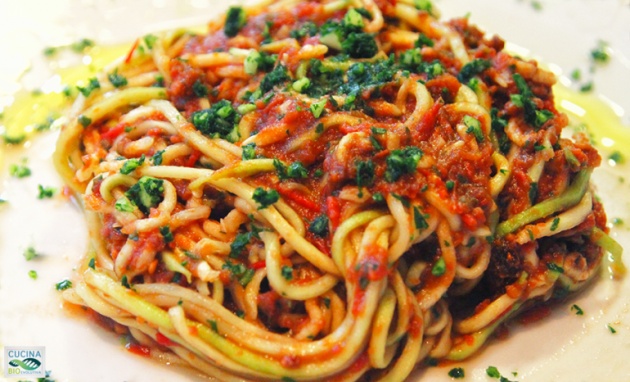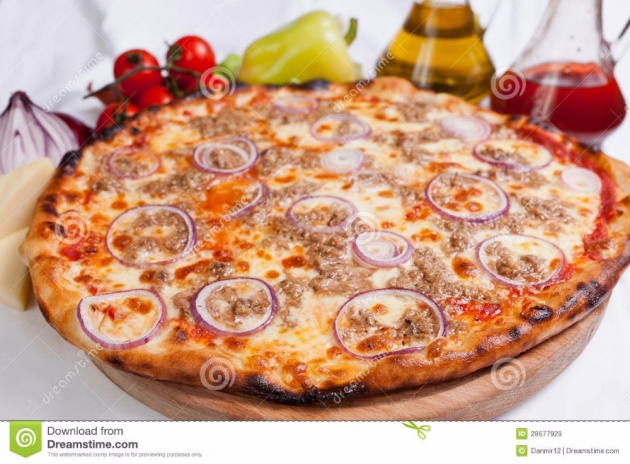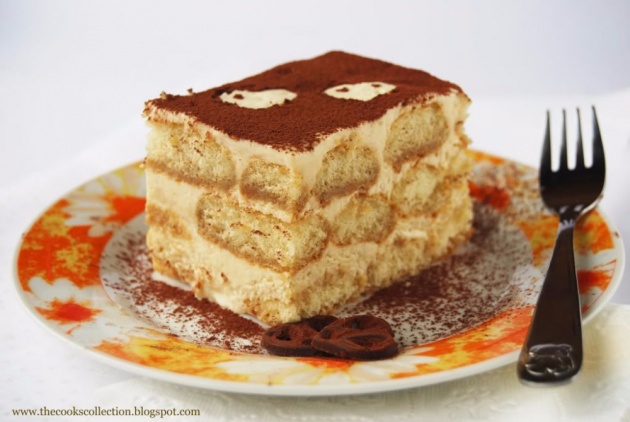Those who love Italy, also loves Italian cuisine. But what's so special about the Italian kitchen? Why are the Italians - like the French - reputed culinary delights?
Eating is not just about the Italians to get full, rather food is for them a communicative experience - an expression of joie de vivre. The relaxed lifestyle is certainly a reason that the inhabitants of the Mediterranean region is not as likely to cardiovascular disease suffer as we did. The Mediterranean cuisine is traditionally simple, wholesome and varied.
1. Insalata di fagioli e pepe - Italian Bean Chili Salad

Servings: 6
Preparation time: 40 minutes
Ingredients:
- 500g dried beans
- 2 cloves garlic
- 1 bell pepper
- 1 bunch of parsley
- few sprigs of fresh marjoram
- 2 tsp Balsamic Vinegar
- 4-5 tbsp olive oil

Preparation:
Caprese - Recipe for Caprese

The Caprese salad is originally from Capri (Italy), when a bricklayer invented a crispy salad after World War II. In the salad are contained the colors of the Italian flag: The red tomato, white mozzarella and green basil, seasoned with olive oil, salt and pepper.
Portion: 2
Preparation time: 30 minutes
Ingredients:
Preparation:
3. Spaghetti Siziliana - Sicilian Spaghetti

Servings: 4
Preparation time: 30 minutes
Ingredients:
Preparation:

Here are three example of Italian main cuisine:
1. Pizza Tonno - Recipe for Pizza Tuna
The word "pizza" was made for the first time in 997 AD in Gaeta (Campania) Italy, and then in various parts of Central and Southern Italy. Initially the pizza was probably the bun, a flat bread known to the Romans as "focacius panis" in Latin, to which were then added toppings to create different types of pizza.

Origins
Servings: 4-6
Preparation time: 45 minutes
Ingredients:
Preparation:
2. Pastasciutta - Noodles with spicy sauce

Servings: 4
Preparation time: 40 minutes
Ingredients:

Preparation:
3. Gamberetti - Recipe for Shrimp

Servings: 4 people
Preparation time: 30 minutes
Preparation:

Tiramisu Mascarpone

Servings: 6-8
Preparation time: 30 minutes, 8 hours cooling time
Ingredients:
Preparation:
2. The cream beat Have Until the sugar granules dissolved.
3. With stirring tablespoon mascarpone at low switching stage.
4. Line a rectangular shape With the half of biscuits.
5. Mix With espresso brandy and soak the biscuits so.
6. Distribute Half of the mascarpone cream on it and cover with the remaining biscuits.




